🛌 1. Many Benefits of Sleep: Sleep has many large benefits for health, happiness, safety and success
- Matthew Walker knows the great benefits sleep offers. He is a professor of neuroscience and psychology at UC Berkeley. Before that he was professor of psychiatry at Harvard Medical School. He’s been a researcher for over 20 years, focusing mostly on sleep. Sleep is a topic Matthew is very passionate about.
- Modern people don’t seem to value sleep. Despite the fact we spend one-third of our lives sleeping. In our schools we are usually taught the importance of healthy eating and exercise. However, we are not taught why it’s important to sleep or how to sleep better.
- 2/3 of people in developed nations fail to sleep at least 8 hours every night. (Which is the amount medical experts recommend.) Many people almost consider it a badge of honor to function on little sleep in the name of higher productivity or success.
- The results of this modern neglect of sleep are catastrophic:
- Lack of sleep makes driving deadly. If you get less than 5 hours sleep, then you are three times more likely to crash your car. Drowsy driving causes more car accidents than drugs and alcohol combined. Why? Because sleep deprivation causes momentary total gaps in awareness of the outside world called “microsleeps.”
- Your immune system needs sleep to fight off diseases and infections. As the top quote said, when you sleep less than six or seven hours per night, you double your risk of getting cancer. And in one study, people sleeping 5 hours per night were 32% more likely to catch the common cold.
- Sleep problems are a factor in all major mental health conditions, like depression, anxiety and suicide. One of Walker’s studies found that people’s brains become far more emotionally reactive when under slept, putting the body into a fight-or-flight state of chronic stress. For this reason, another 2011 study found those who sleep too little are 45% more likely to develop or die from heart disease within 25 years.
- Sleep also helps us regulate our appetite and make healthier food choices. A lack of sleep increases levels of a hormone named ghrelin that makes us feel hungry, while lowering levels of the hormone leptin that makes us feel full. Dr. Eve Van Cauter of the University of Chicago found that study participants restricted to 4-5 hours of sleep ate an average of 300 more calories daily, which translates to 10-15 pounds of extra weight gain per year.
- Sleep loss may accelerate diabetes by makes our bodies less receptive to insulin. Two research groups discovered that people who sleep less than 6 hours per night have far higher rates of type 2 diabetes. Another study took healthy participants and made them sleep just 4 hours a night for 6 nights. By the end, their ability to absorb glucose was impaired by 40%. This means most doctors would take one look at the test results and rate them as pre-diabetic.
- On the positive side, sleep helps us succeed in our career or business.
- Under slept workers tend to choose easy low effort tasks like browsing emails, according to some studies. But people who had enough sleep were more likely to do challenging tasks, the kind that drive careers forward, like designing a complex project or being creative.
- Back in the 1990s NASA recognized the importance of sleep and created a nap culture throughout the organization. They found that even short naps that are 26 minutes long increase alertness by 50% and increase performance on a task by 34%.
- From the point of view of survival and evolution, sleep only makes sense if it is absolutely essential to life. There is little that makes an animal more helpless than needing to slip into a coma for hours every night. Yet all animals sleep, from insects to fish to frogs and birds and mice and tigers, bears, chimps and humans. In fact, dolphins, who need to continue swimming while they sleep, can sleep only half their brain at a time.
Matthew Walker is a professor and researcher at UC Berkeley. He has been studying sleep for over 20 years. He wants to help modern people value sleep again. Lack of sleep destroys the immune system, causes mental health issues and makes driving far more dangerous.
🌙 2. Sleep Deprivation: Two-thirds of people don’t sleep enough, impacting their health. Do you?
- So, are you getting enough sleep? As mentioned before, 2/3 of people in the US fail to get seven to nine hours of sleep each night that medical experts recommend. Matthew offers these two simple questions you can ask yourself:
First, after waking up in the morning, could you fall back asleep at ten or eleven a.m.? If the answer is “yes,” you are likely not getting sufficient sleep quantity and/or quality. Second, can you function optimally without caffeine before noon? If the answer is “no,” then you are most likely self-medicating your state of chronic sleep deprivation.
- People often try to “catch up” on sleep during the weekend. Especially when they have a habit of sleeping too little during the week. But as you’ll see, missing sleep is not like a credit card debt that you can simply pay back later. There are real consequences to sleep deprivation, especially when it comes to learning and memory.
- Most cultures that have not been touched by technology sleep in a biphasic pattern. This means they sleep at night for 7-8 hours, and also have a 30-60 minute nap each afternoon. This pattern has been observed in hunter-gatherer tribes in Africa.
- Biphasic sleep is also popular in many Mediterranean countries like Spain, Italy and Greece. These countries have a “siesta” culture of taking an afternoon nap during the hottest part of the day. A study of 30,000 Greeks found that people who took these afternoon naps were significantly less likely to die of a heart attack. Unfortunately, this practice is now far less popular among younger working people than the older generation.
- In contrast, most people in developed countries sleep in one long stretch at night, which scientists call a monophasic sleep pattern. To most of us this is the “normal” way to sleep, but it is probably not the healthiest way.
You are not getting enough sleep if you could fall asleep again a couple hours after waking up, or if you can’t function well before noon without coffee. People in cultures that don’t yet have technology often take a 30-60 minute nap in the afternoon, and this has good health benefits.
⏰ 3. Understanding Sleep Patterns: Why do we feel sleepy or alert at different times? (Plus: tips for consuming caffeine)
- You will sleep better when you understand the inner workings of sleep. Many modern people suffer from a type of environmentally-induced insomnia because we don’t realize the effect things like caffeine, lights and temperature have on our sleep.
- The first part of our sleep/wake system is an inner clock. This clock is located in a very deep and small part of your brain called the suprachiasmatic nucleus.
- The human inner clock repeats a sleep/wake rhythm of about a day. Humans follow this rhythm even when totally cut off from sunlight. This is called our “circadian rhythm,” the word “circadian” meaning “about a day.” This rhythm is actually about 26 hours, a little longer than a day. Why? Scientists aren’t sure, but they guess the sunlight information our brains receive helps fine-tune this imprecise internal rhythm.
- How did scientists discover this inner clock? In 1938, University of Chicago professor Kleitman and his research assistant Richardson did a radical experiment. They went into one of the deepest darkest caves in the US and remained there for 32 days in complete darkness. They took along many scientific/medical instruments, weeks worth of food, beds and so on. They also brought buckets of water to submerge their bed legs into so no creepy crawly things could join them in bed.
- This inner clock is the part of the brain responsible for “jet lag.” Jet lag is the experience people get when they travel across many time zones. They can’t sleep at night easily and feel sleepy during the day because their inner clock still is more in tune with the time zone they left from. So how long does it take for jet lag to go away? Matthew Walker has an answer:
For every day you are in a different time zone, your suprachiasmatic nucleus can only readjust by about one hour.
- The second part of our sleep/wake system is a chemical called adenosine. Adenosine builds up a “sleep pressure” inside of us the longer we stay awake. After 12-16 hours of being awake most people will get a very strong urge to go to sleep, which is caused by rising levels of adenosine in your brain.
- Caffeine actually works by blocking this adenosine chemical. Caffeine works by latching onto the same receptors in your brain as adenosine, it outraces adenosine to these receptor sites so that your brain cannot receive the message of tiredness. As a result, caffeine helps us avoid feeling drowsy, for a while at least.
- Many people suffer a “caffeine crash” a few hours after drinking coffee because of adenosine. Once the caffeine you drank has been fully decomposed by your liver, your adenosine levels have meanwhile REALLY built up. Suddenly your brain is hit with a huge wave of adenosine which makes people feel suddenly really tired.
- When you drink caffeine, 5-7 hours later half the caffeine is still in your system. So you should generally avoid drinking it late in the afternoon. Most people underestimate how long it takes our bodies to flush out caffeine. This can lead to major sleep problems.
You have an inner clock that makes you feel sleepy or awake in a “circadian rhythm” that repeats every day, even without sunlight exposure. You also have a chemical called adenosine that builds up a “sleep pressure” the longer you are awake. Caffeine works by blocking adenosine from making you feel tired, but taking caffeine even several hours before bed can make sleep difficult.
🕒 4. Identify Your ‘Chronotype’: Are you a morning type or evening type of person?
- The start and stop times of people’s 24 hour inner clock vary widely. This means you can be roughly categorized as a morning type, evening type or somewhere in-between. Scientists call this your “chronotype.” So if you understand your natural “chronotype” then you can maximize your daily alertness and work productivity.
- About 40 percent of people are “morning types.” They like waking up very early and feel sleepy early at night. This is the way their “inner clock” is wired. Our society is often set up for these people, with people often needing to wake up early for work or school.
- Another 30 percent of people are “evening types.” Their “inner clock” gives them a natural tendency to stay up late and therefore wake up later the next morning. Their brain also doesn’t wake up quickly in the early morning, they need some time to become fully alert and functional. The final 30 percent of people fall somewhere between the morning and evening types.
- Our society is often built around “morning types.” Unfortunately, if you are an “evening type,” you may struggle to follow the schedules that now common in society. Like waking up at 7 or 8AM to commute to a 9-5 job. So evening types are often labeled as “lazy” though they are just following a built in natural rhythm.
- A person’s inner clock changes a lot through growing up. For example, newborn babies wake up and fall asleep many times through a day. But as they grow up, they develop a stronger 24 hour rhythm. By the age of four, this rhythm is mostly established and kids mostly sleep in one long nighttime block with maybe one daytime nap. Kids in general have an earlier inner clock, going to sleep and waking up earlier than adults.
Teenagers universally stay up later…
- Teenagers universally stay up later and have trouble getting up. This is because during adolescence the inner clock shifts later. Teens don’t stay up to be rebellious (at least not always) but because their circadian rhythm makes them not feel sleepy at 10PM. It’s like asking an adult to go sleep at 7PM. This of course presents a conflict with early school start times.
- Schools should shift to later start times and later end times, recommends Professor Walker. In one test case in Edina Minnesota, a school went from starting at 7:25 to 8:30AM and SAT scores for top-performing students increased by about 150 points. As a side effect, this would lessen the time after school when adolescents could get mixed up in mischief or crime before parents arrive from work.
- Flexible work shifts can also ensure all types of people are productive at work. Professor Walker says employers should allow workers to choose more flexible hours instead of one rigid start and stop time for everybody. For example, morning types could show up at 6AM, while evening types can sleep in and finish work later. Everyone would only need to be present at the same time for a core window of time, like noon to 3PM. I think this is a great idea.
40% of people are morning types, 30% are evening types and the rest are somewhere in between. This means our biological inner clock naturally makes us drowsy and awake at different times to other people. Unfortunately, society is built around morning types, and evening types are judged as lazy.
💤 5. REM Sleep Cycles: Every 90 minutes, we cycle into ‘REM Sleep’, crucial for dreaming and rest
- During sleep, every 90 minutes humans cycle between two very different sleep stages: REM and Non-REM. Sleep research pioneer Eugene Aserinsky was the first to discover REM sleep in 1953. He did it by hooking his son up to an EEG machine overnight which measures electrical activity in the brain, while he stayed awake with pretzels and coffee.
- REM sleep offers different benefits for our brains than NREM sleep. This is why we need all stages of nightly sleep for our brains to function effectively.
When it comes to information processing, think of the wake state principally as reception (experiencing and constantly learning the world around you), NREM sleep as reflection (storing and strengthening those raw ingredients of new facts and skills), and REM sleep as integration (interconnecting these raw ingredients with each other, with all past experiences, and, in doing so, building an ever more accurate model of how the world works, including innovative insights and problem-solving abilities).
- REM stands for rapid eye movement. This is because during REM sleep, people’s eyes move jerkily under their eyelids. You can actually see when someone is in REM sleep by closely observing their eyelids.
- Brain activity during REM sleep looks almost identical to brain activity while awake. (And it is very different from the slow deep brainwaves of Non-REM sleep.) This is because vivid dreaming takes place only during REM sleep. So the parts of our brains related to our senses, vision, emotion and memory are very active.
- However, a part of the brain called the prefrontal cortex is mostly deactivated during REM sleep. The prefrontal cortex specifically controls rational, logical and orderly thinking in our minds. Considering how irrational and nonsensical our dreams can be, this makes sense. All voluntary muscles in your body are also paralyzed, just before dreaming… probably so we can’t start dangerously swinging our limbs in bed.
- (See our note on Stanford Professor Robert Sapolsky’s book Behave to learn more about how different parts of your brain control your behavior.)
- A fetus in utero spends about half its sleep time in REM sleep. Even when a baby is six months old, this ratio remains about the same. REM sleep is always greatest during the early stages of life when the brain is being built. It is only when a child is several years old that REM sleep decreases to about 30% of total sleep time. (About 20-25% of adult sleep time is dedicated to REM sleep, which is still a lot more than other animals. Other primates spend only 8% of the time in REM sleep.)
- Interestingly, autistic children have 30-50% less REM sleep than other children. Does this mean too little REM sleep causes autism, or vice versa? Scientists don’t know. However, experiments on sleep deprived infant rats did show a lack of REM sleep led to unusual neural connections and made them become socially withdrawn and isolated later in life.
- Unexpectedly, REM sleep is not spread evenly throughout the night. We get more of our REM sleep during the last half of the night. This means if you habitually wake up under slept (with 6 hours of sleep for example), then you will miss out on a big chunk of your nightly REM sleep and the unique benefits it provides.
- Avoid alcohol—Even moderate amounts of alcohol severely lower how much REM sleep we get. When alcohol is processed by the body, chemicals called aldehydes are released, which are a very powerful REM sleep suppressor.
- Alcohol doesn’t help us achieve natural sleep. It is a sedative which means while it sedates certain parts of brain activity including impulse control. Alcohol causes fragmented sleep with many small awakenings in the night, blocking us from a truly restorative night of sleep.
- Alcohol caused 40-50% memory loss in college students learning new grammar. In this study of college students, one group drank 2-3 shots of vodka mixed with orange juice the day after learning and they had 50% more memory loss 7 days later, compared to the control group who didn’t drink! Even more surprisingly, another group who drank 3 days after the initial learning also suffered a 40% memory loss.
REM stands for rapid eye movement, which happens during REM sleep. REM sleep brainwaves are similar to our waking state, but the logical part of our mind and muscles are deactivated. Even moderate alcohol intake dramatically inhibits REM sleep.
🎨 6. Additional REM Benefits: REM dream-sleep provides extra benefits for emotional balance and creativity
- Our dreams often contain our daytime emotional concerns.
- Sigmund Freud came up with the idea of “day residue,” which means he believed that dreams were a replay of our day’s events. It turns out Freud’s idea is partially true.
- A recent study by Robert Stickgold at Harvard asked 29 participants to keep a detailed log of their daily activities and nightly dreams. While people’s dreams almost never replay exactly what happened the previous day, their dreams do contain what they were emotionally concerned with during the day, 35-55% of the time.
- REM-sleep dreaming provides a type of overnight therapy. Only during REM sleep, a stress chemical called noradrenaline is deactivated in our brains. This means while dreaming we are able to recall distressing or traumatic memories, while remaining emotionally calm. This paradoxical state lets us process those frightening experiences, and dissolve the painful emotional charge wrapped around past traumas. As a result, we can recall what happened and learn from it, without becoming emotionally crippled each time by the memory.
- After an overnight sleep, people react much less to emotional images they saw before. This was proven by one of Matthew Walker’s studies. First he showed a set of emotional images to people in an MRI scanner, observing their brain activity. Then 12 hours later, he showed the same images again. However, this time half the people had slept overnight and the other half didn’t sleep. What he discovered was very important. The people who had slept now had much less reactivity in their amygdala, which is a part of the brain that triggers strong emotions like fear. The people who hadn’t slept were just as emotionally reactive as the first time. Even more importantly, he found that those participants who had specifically gotten good REM sleep that had the biggest overnight improvements.
- To provide emotional resolution, your dreams must be about the distressing or traumatic experience. Another Chicago researcher, Dr. Rosalind Cartwright was studying her clinically depressed patients. She had them keep a detailed log of their dream contents. And what she found was the patients who dreamed about their difficult life situation (like a terrible breakup or divorce) were the ones who came our of depression one year later. Just dreaming in general didn’t provide an improvement in depression.
Dreaming also inspires creativity…
- Dreaming also inspires creativity because during REM sleep our brains form more distant and non-obvious connections. During REM sleep our brains make connections differently, forming links between very distant memories and information, and blending it together in new ways. This is why dreams can be so bizarre.
- Many famous artists and inventors have credited dreams for their creativity.
- Paul McCartney of The Beatles said some of his best-loved songs such as “Yesterday” and “Let it Be” came to him during dreams. And…
- Thomas Edison would often sit down for daytime naps in an armchair, holding three metal balls in his hand. Just as he was falling asleep, the balls would crash to the floor, waking him up again. In this state of just coming out of sleep, he wrote down all the new ideas floating through his mind.
- People are more “open-minded” problem solvers just after REM sleep, studies have found. Professors Walker and Stickgold at Harvard devised an experiment where they woke participants up in their lab four times a night, twice during REM sleep and twice during NREM sleep. After waking, they immediately gave the participants 90 seconds to solve anagram puzzles. Surprisingly, just after REM sleep, participants were 15-35% better at solving the word puzzles than after NREM sleep or even while awake. That’s a big improvement! They concluded that REM sleep gives people a more open-minded state of free mental association. But this quickly evaporates in the minutes after waking up.
Only during REM sleep, a stress chemical noradrenaline is deactivated in our brains. This allows us to process frightening, stressful or traumatic waking experiences. During REM sleep our brains are also able to form more distant and non-obvious connections. This is why dreams can be so bizarre yet often inspire creativity.
🧠 7. NREM Sleep: NREM sleep is essential for learning and establishing long-term memories
- During NREM sleep our brainwaves become slower and more synchronized. In this stage of sleep, our brainwaves are like a stadium of people chanting together. They travel deeply throughout our brain, connecting distant regions. This is a big difference from REM sleep or the waking state, where our brains cells fire more individually with fast frequency, like a stadium of people chattering chaotically.
- NREM sleep moves our daily memories from short term to long term storage. During NREM sleep, researchers can actually see a pulse of electrical current moving between the hippocampus to the cortex every 100-200 milliseconds. A good analogy is moving your digital photos from a memory card to your computer’s large hard drive. MRI scans also confirm that memories are retrieved from different locations before and after sleep.
- Before sleep, our recent memories are retrieved from our hippocampus, which is a fragile, short term place of storage with limited capacity.
- After sleep, the same memories are retrieved from our cortex, which is a more stable and permanent home.
- Sleep also helps us learn new motor skills faster. New learning is not just memorizing facts, but also what people often call “muscle memory.” For example, learning to ride a bike, drive a car or play a musical instrument. These are things you cannot learn from a book, but through practice.
- The brain continues to learn new skills into “muscle memory” while we sleep, not just while we practice. In one of Walker’s studies, he taught two groups of people to type sequences of numbers like 4-1-3-2-4 as quickly and accurately as possible. It was a simple test of motor learning. So one group was taught the number sequences in the morning and tested again 12 hours later in the evening. The second group was taught the sequences in the evening and tested 12 hours later in the morning after 8 hours sleep. The results were clear: those who slept improved their ability to type the number sequences far more than the other group, with 20% speed improvement and 35% accuracy improvement.
- NREM sleep prepares our brain for fresh learning. In one study, two groups of people did a memory exercise, memorizing 100 pairs of faces and names. One group of people was allowed to sleep 90 minutes while the other group stayed awake. Then they did the exercise again, memorizing another 100 face-name pairs. Those who took a nap did a lot better than the second group, being able to memorize 20% more as the day progressed.
Even daytime naps as short as twenty minutes can offer a memory consolidation advantage, so long as they contain enough NREM sleep.
- Sleep spindles appear especially important for overnight restoration of learning capacity. What are sleep spindles? They are short, powerful bursts of neural activity that happen during stage 2 of NREM sleep. Analyzing brainwave sleep activity during the previously mentioned study, researchers found the more sleep spindles someone has, the better they can learn the next day. Older people 60-80 years old have 40% less of these sleep spindles, which may explain why new learning appears to come easier for younger people.
- The last 2 hours of nightly sleep are most important for consolidating memory. Why? Because that’s when we get the most stage 2 REM sleep and sleep spindles. This is important because if you cut your sleep short in the morning, then you will lose a disproportionate amount of the sleep that is beneficial to memory. In fact, Professor Walker is so concerned about his university student’s sleep deprivation and overnighters (where they stay up all night studying), that he split his own courses into three parts and no longer has a single large stressful exam at the end.
During NREM sleep our memories are moved from short term storage in our hippocampus to long term storage in our cortex. Our brains continue to reinforce new memories of facts and motor skills even while sleeping. We need 8 hours of nightly sleep for our learning capacity to be restored for the next day.
🔄 8. Improving Sleep Quality: Environmental adjustments, not sleeping pills, are among the most effective treatments for insomnia
- 28-45% of clinical insomnia may be determined by genetics. But this also means the majority of insomnia is not caused by genetics, but environment or surroundings. There are also many people who do not really have insomnia, but other sleep problems caused by lack of education about how environment or habits can negatively affect sleep, like drinking coffee too late.
- 10 million people in the US take sleep medications monthly, but studies have found the benefits are small and questionable.
- On the other hand, the downsides and side effects of sleeping pills can be large. Among other side effects, Ambien seems to cause many memory problems, even weakening or erasing existing memories.
- Plus sleeping pills are a sedative, like alcohol. They work by knocking out frontal cortex functioning. This means they don’t provide a natural sleep. Brainwaves of people taking Ambien or Lunesta are measured to be smaller and shallower than regular deep sleep brainwaves.
- The America Medical Association now recommends CBT-I as the first line of treatment for insomnia, not sleeping pills. That stands for cognitive behavioural therapy for insomnia. CBT-I is generally done with a trained therapist over several weeks, who helps you eliminate bad sleep habits and lower anxieties. (The most common reasons for chronic insomnia are psychological worry or anxiety. When your fight or flight system is triggered, it can be very difficult to sleep.)
- Sleep hygiene means first making changes to your sleep environment and habits. This is the foundation that CBT-I is based upon. And the good news is, anyone can begin following some basic rules to set up a better sleep environment. You’ve already heard some of the rules in this note, like not drinking coffee too late and not drinking alcohol.
- Here are four more top sleep hygiene recommendations proven by science:
- 1. Avoid artificial light in the evening, especially blue LED lights. Artificial lights suppress melatonin, a hormone triggered by darkness that helps our brain know when to start sleeping. If you’re surrounded by lights at night, then melatonin levels do not rise appropriately. One study found even reading on an iPad versus a print book suppressed melatonin levels by 50% and delayed the onset of sleep by many hours.
- 2. Decrease your body’s core temperature to initiate sleep more easily. To fall asleep, your inner temperature must fall by 1 degree celsius which is 2-3 degrees Fahrenheit. This is probably related to nighttime being naturally colder than daytime. So keep your room on the cool side rather than the warm side. A warm bath can also help, because body temperature actually decreases a lot after you get out of the bath due to dilated blood vessels.
- 3. Go to bed and wake up at the same time each night. This is Matthew Walker’s number one sleep improvement recommendation. Keep this bedtime constant even on weekends.
- 4. Don’t lie awake in bed for more than 20 minutes. If you can’t sleep, go do something relaxing for a while and then return and try to sleep again. Doing something relaxing before bed also help soothe mental anxiety and decrease heart rate which in turn decreases body temperature. This tip helps many struggling with insomnia.
10 million people in the US take sleeping pills each month, but studies say the benefits are small and side effects can be large. The recommended treatment for insomnia is now CBT-I, which combines changing sleeping environment and bad sleep habits, plus lowering anxieties. Simple effective changes include eliminating artificial light in the evening, lowering body temperature and going to sleep and waking up at the same time each night.

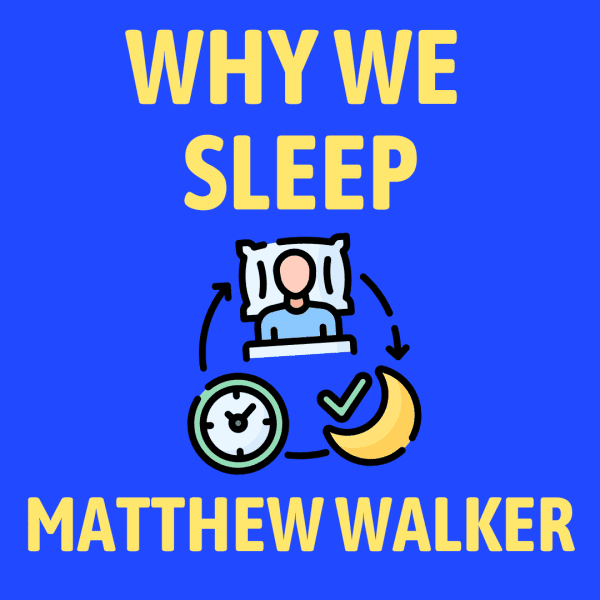










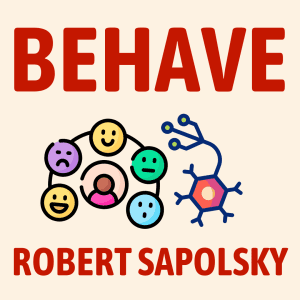
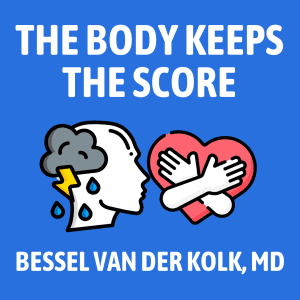
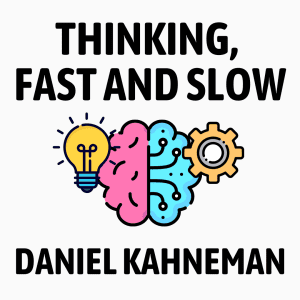
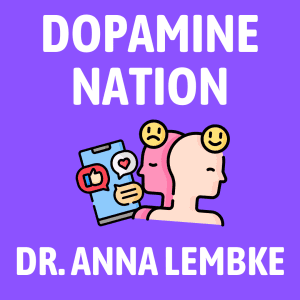
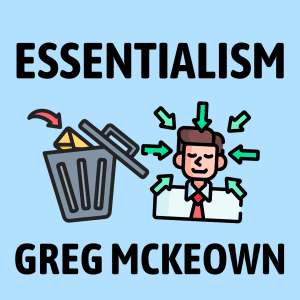
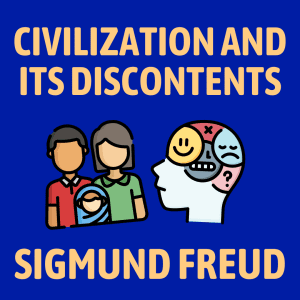
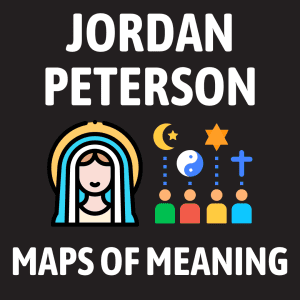
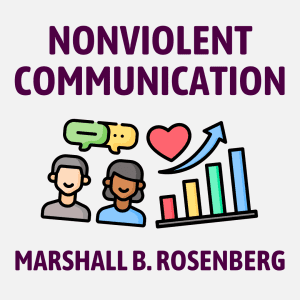
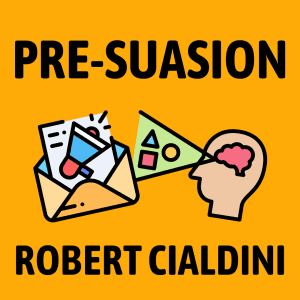
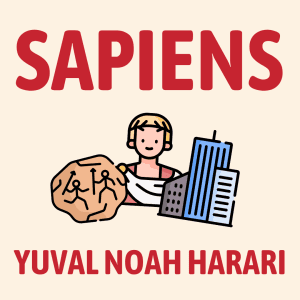



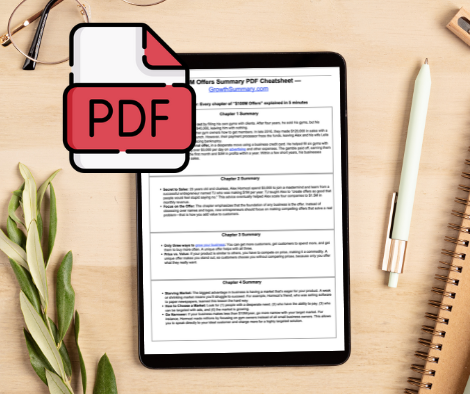
Community Notes